- Free Shipping Over $75
- Easy 30-day returns
- Craftsmanship
- Signature Diamonds
- 360 Degrees
- Settings
Which Diamond Cut Are You Made For?
Which Diamond Cut Are You Made For?
The Diamond Shapes That Make Fine Jewelry a RealityWith so much debate and speculation surrounding the diamond cut, many people want to know which one is better, which one is the right fit for them, and some wonder if it’s just a matter of personal opinion. Technically speaking, different diamond cuts do vary in their ability to pass light, fit certain pieces of jewelry designs, the overall aesthetic feel and other integral factors. Certain diamond cuts enhance the perception of size, and other cuts are simply more universal and can be integrated more easily into different designs, styles and fine jewelry products. But what if someone just likes a certain diamond cut, solely based on the way it looks? Or is it totally necessary to consider the technical aspects, if you just love a specific design? The answers to these and other similar questions, ultimately boil down to what matters most to you, what you enjoy today and how confident you are that your decision today will continue to serve you well in the future. Since most of us purchase diamond jewelry for the long haul, and diamonds typically make up at least 50% of the underlying price of a piece of diamond jewelry, we all want to make informed decisions. But with so much information out there on jewelry and diamonds, making an informed decision requires sifting through countless sources of information. And arguably the greatest challenge in making an informed decision is identifying which sources are reputable and which to pass on. It would be a delight if a single resource could isolate the truly impactful factors to consider, when making a decision on the diamond cut. Not surprisingly, each buyer will differ in their interpretation on what is “impactful”, but there are some universal considerations that can and should be made in the course of the decision making process. The Round Cut Diamond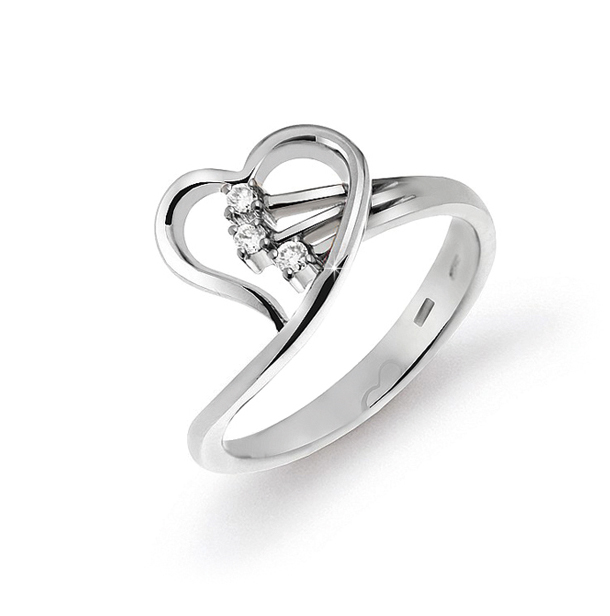 The round cut diamond is considered the most universal. No other diamond shape finds itself in so many engagement rings, wedding bands, necklaces, pendants, bracelets and even brooches. The two main reasons the round cut diamond is so widely accepted is its universal circular shape, and the fact that the round diamond maximizes the amount of light return, thereby maximizing the fire or sparkle of the finished piece of jewelry. The round brilliant offers 58 facets, and it is widely believed that more than half of all diamonds in the industry are round. What other diamond cuts can you envision being set in the above heart-shaped engagement ring setting?  One of the most telling factors that has earned the round cut diamond a dominant position in the industry is effectively depicted in this pair of diamond earrings. These diamond earrings feature a double halo in a soft square shape, and yet all of the diamonds are actually round cut. This layout is common in situations where the designer’s intent is to create a certain shape but still maximize the sparkle of the final design. As a result, it is fairly typical for square, oval and evern marquise shapes to be created using round cut diamonds. The Princess Cut Diamond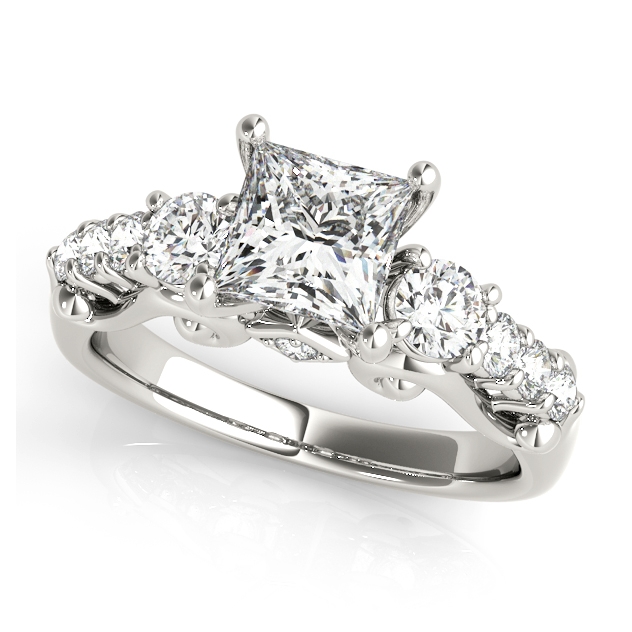 The princess cut diamond is considered to be the most romantic. However, its square shape does not always work in its favor, which is why its sharp corners are frequently avoided by jewelry designers, strictly from an aesthetic perspective. Additionally, the typical princess cut diamond only has 50 facets, which noticeably decreases its fire and scintillation. On the other hand, fewer facets, a square shape and decreased light return collectively diminish the effect of inclusions and imperfections, so there is definitely a tradeoff. One of the most prevalent solutions to this challenge is the introduction of round brilliant diamonds into the equation. This three stone princess cut diamond engagement ring features a total of 13 diamonds, only one, the main center stone, is a princess cut. The two diamond accents and the ten side stones all consist of round cut diamonds. In this manner, the designer is able to create a princess cut engagement ring while maximizing the fire of the design. The Pear Cut Diamond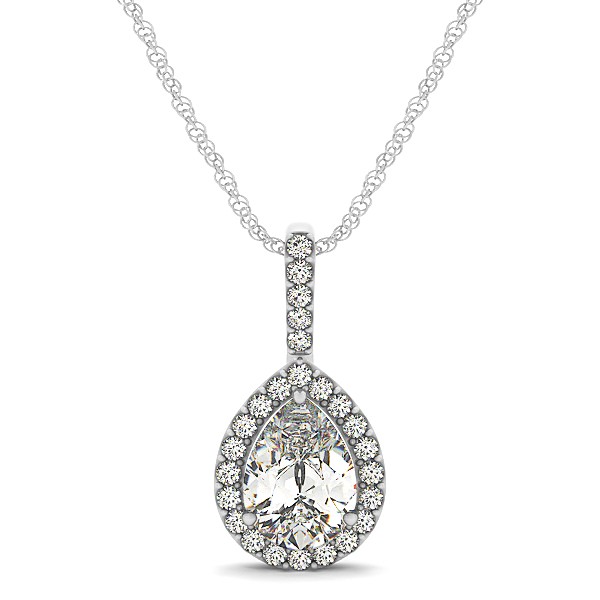 Arguably the most notable aspect of the pear cut diamond its size, relative to its round brilliant counterpart. Not only does the pear shape create the optical illusion of a larger size than the diamond actually is, but the pear cut diamond is in fact larger on the top surface. To be more precise, the pear cut diamond necklace shown above is set with a one carat pear shaped center diamond, further accentuated by 25 round cut diamonds, including seven accent diamonds and the 18-diamond halo. Wouldn’t it be great to compare what this necklace looks like with a round cut diamond? 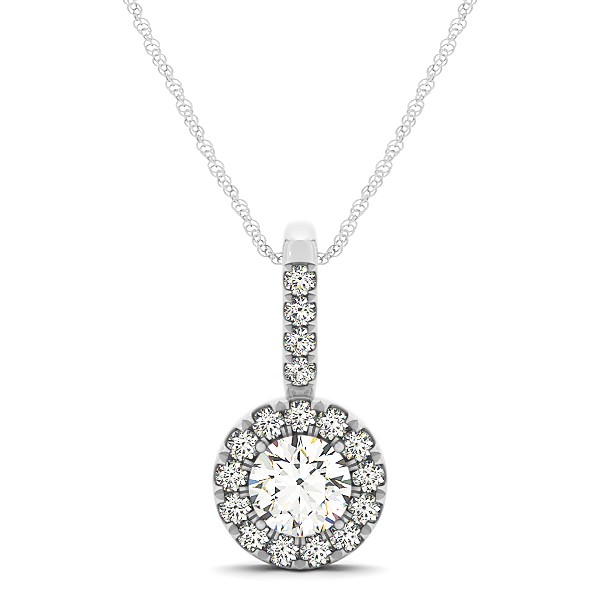 Indeed, if you look at this version of the diamond necklace, featuring a round cut diamond center, the top surface of the pear shaped diamond certainly looks and is larger. In this particular instance, the decision would come down to a preference of sparkle versus look and feel. To some, it’s all about the sparkle and the round cut diamond is the best fit. To others, the look and feel of this necklace with the pear shaped diamond outweighs the fire, so the decision is yours to make. The Emerald Cut Diamond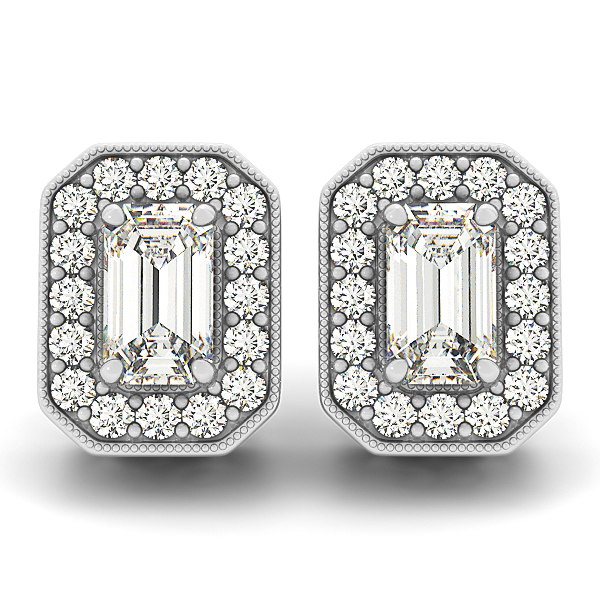 No discussion on the topic of diamonds is complete without the emerald cut. The emerald cut diamond stands out, in part because of its elongated size and larger table, and in part due to its focused fire at specific angles, as opposed to the all around sparkle with the round brilliant. The unique and captivating shape of the emerald cut diamond also is also credited with making the diamond seem larger than it actually is, or, to put it more accurately, larger than a round brilliant with the same carat weight. Aesthetically speaking, the emerald cut diamond renders a certain elegance that other diamond cuts do not offer, but while the larger and bulkier feel is a great addition to some, it is not always a fit for all tastes and certainly not for all fine jewelry designs. In many cases it is best to design the jewelry around the emerald cut diamond, to achieve the desired effect of the final product. So Many Diamond Cuts, So Little TimeWhile we did cover some of the most popular diamond cuts in the industry, a substantial number of diamond cuts did not make it into this publication. The cushion cut partially shares the larger look and feel with the emerald cut, though it is in fact substantially smaller. The oval cut diamond is often used for a similar purpose. Ultimately, the decision as to which diamond cut to go with is for each person to make, and we certainly recommend balancing factors such as your budget, affinity for sparkle and your expectations of the overall design, in your decision making process. While there is no right answer per se, there is a way to manipulate the variables that will help you end up with the right aesthetic balance and a design that is a pleasure to call yours, all for a price that makes logical sense. To beauty, then, we raise our cup of cheer! |












